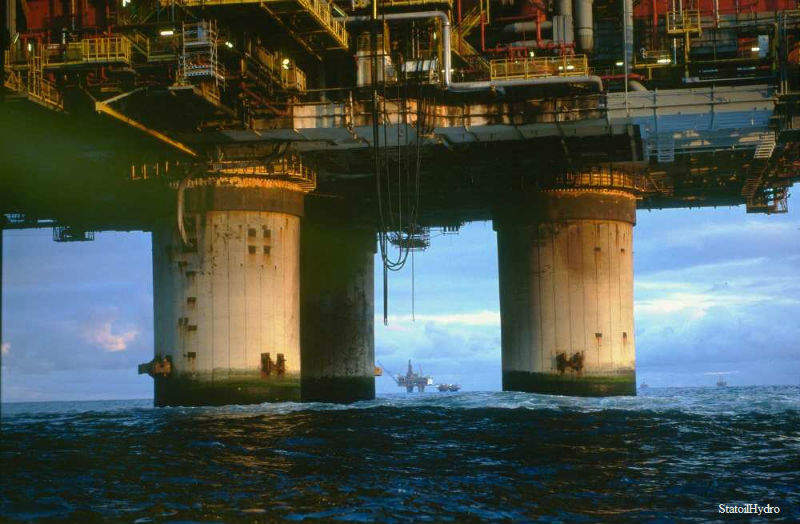
Central North Sea is by far the costliest to decommission
According to the OGA’s 2019 Decommissioning Estimate Cost Report the Central North Sea (CNS) is by far the costliest sector on the UKCS to decommission, with plugging and abandoning (P&A) costs alone in this area costing £11bn, half of the £22bn total for the entire continental shelf.
Decommissioning in the CNS and the Northern North Sea (NNS) together comprise around 75% of estimated decommissioning costs on the UKCS.

Discover B2B Marketing That Performs
Combine business intelligence and editorial excellence to reach engaged professionals across 36 leading media platforms.
This is attributed to a substantial number of high well-count production platforms in the area, as well as a large number of costly-to-decommission subsea wells.
However, the report also notes that platform running costs, well P&A costs and removal costs in the CNS and NNS have seen significant cost reductions, allowing operators to make positive progress on reducing decommissioning costs on the UKCS.
These improvements in decommissioning infrastructure have resulted in estimated decommissioning costs being reduced to £51bn in 2019, a drop from £59.7bn in 2017, despite including more assets and infrastructure than the inventory in 2017.
The lessons learned from these costly areas of the North Sea could also be applied to sectors such as the Southern North Sea (SNS), improving costs for the UKCS as a whole.

US Tariffs are shifting - will you react or anticipate?
Don’t let policy changes catch you off guard. Stay proactive with real-time data and expert analysis.
By GlobalDataCost uncertainty is dropping but remains high
Despite optimism in the report, there is still a significant degree of cost uncertainty in decommissioning estimates provided by oil and gas operators in the UKCS.
While these estimates have lower uncertainty than those submitted in earlier surveys, which resulted in a risk-weighted cost reduction of £2.6bn, there nevertheless remains a high fraction of decommissioning cost estimates with high uncertainty. This includes assets being decommissioned in the next five or six years.
Abandonment represents the biggest cost
Across the UKCS well abandonment represents the biggest cost for operators, with 44% of decommissioning efforts being focused on well P&A.
Subsea well abandonment is the costliest abandonment type in the UKCS as a whole, as well as in the CNS, NNS and west of the Shetland Islands. Platform well abandonment follows closely behind, and is the costliest type in the Irish Sea and the SNS.
However operators nearly halved subsea P&A costs in 2018 compared to 2017. The OGA attributes this reduction to extensive campaigning and batching of P&A opportunities with efficient logistics, use of rig-deployed remotely-operated vehicles and increased expertise of third-party personnel.
As such a significant part of decommissioning efforts, abandonment is an area of focus for the oil and gas supply chain as well as operators and academia. This focus has allowed for a number of technological developments that have reduced costs for abandonment operations.
For example, operators have tested the applications of laser technology for cutting well conductors on wells and platforms in the SNS. These trials suggest the technology may be able to increase efficiency by eliminating issues associated with mechanical components, reducing the cost of decommissioning operations.
The next 20 years are key
The OGA used stewardship submissions from operators to create an annualised forecast profile for 2019-2065, proportionate to the skew of uncertainty distributions.
According to this profile approximately 90% of decommissioning expenditure is projected to be incurred over the next 20 years, with the greatest cost being incurred from 2025-2030 at just under $2.5bn.
Following this peak at 2030, the decommissioning expenditure is expected to decrease at a regular rate until around 2040, at which point the expenditure will significantly decrease to just under $1bn. Following the drop in costs at 2040, the expenditure will continue to decrease, reaching zero by 2060.
This forecast profile has a lower annual run rate over the next 20 years compared to 2018 estimates, which predicted a peak cost of over $3bn in early 2030. This more optimistic outlook can be attributed to recent technological developments making decommissioning operations more efficient and effective.
Rising day rates and inability to adapt are significant risks
The report also highlights a number of risks that could affect the costs of decommissioning in the UKCS.
As subsea well abandonment is so costly, it has been the focus of a lot of cost-reduction efforts. However, since this activity typically uses equipment also used for other offshore activities, there is a risk that day-rates will increase as offshore activity in the North Sea increases.
The difficulty of abandoning subsea wells could create additional difficulties across other types of decommissioning, with operators struggling to compensate for costly subsea P&A.
In addition, exploration and development funding requirements for other offshore operations could pose financial constraints on decommissioning operations, which could result in sub-optimal decommissioning timing.
The OGA also emphasises the risks posed to offshore decommissioning operations by organisational and administrative errors, as well as an inability to adapt to changing decommissioning infrastructures.
Examples cited by the OGA of these potential risks include operators commencing planning for decommissioning too late, or providing unrepresentative estimate values by being optimistic in development of provisioning estimates.
Another administrative mentioned in the report is operators using more traditional development project and contracting approaches, which could “unnecessarily over-engineer the solutions” to decommissioning problems and increase costs as a result.
A lack of investment in new technologies, as well as a failure to effectively transfer existing technologies from other sectors, may mean the industry does not capitalise on opportunities to reduce the cost of decommissioning operations.





